14 Fascinating Insights Into How Cats Perceive Their Environment
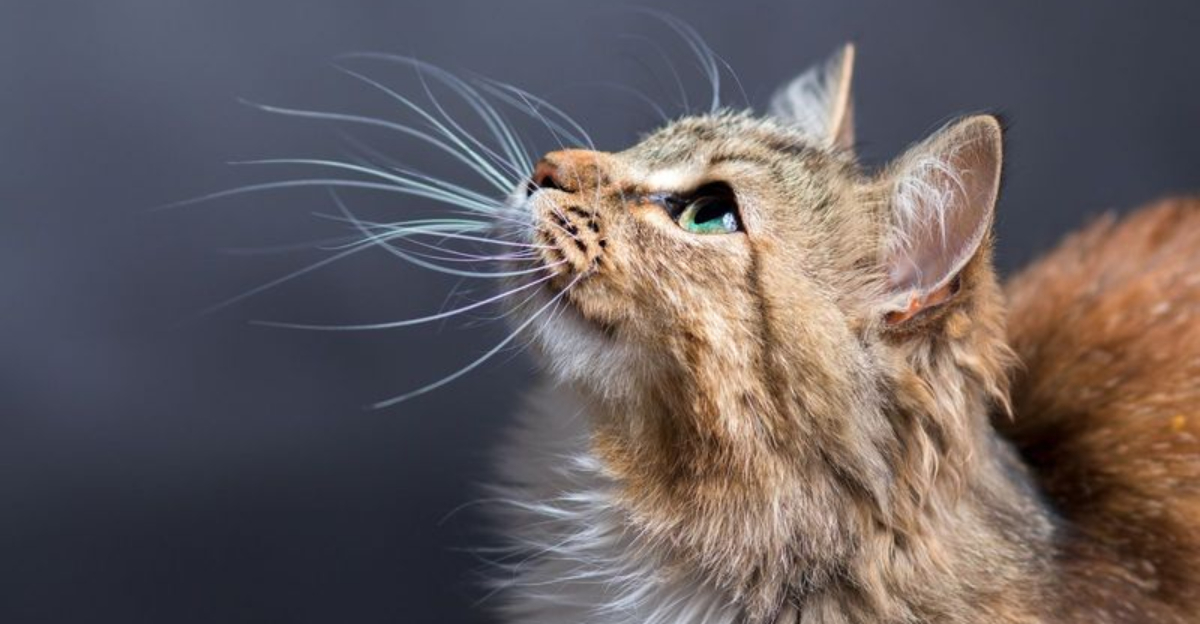
Exploring the intriguing world of feline perception, this list uncovers the unique ways in which cats interact with their surroundings. From their extraordinary vision to their mysterious whiskers, we delve into the fascinating mechanisms that allow cats to navigate their environment with such effortless grace and precision.
Each section offers a distinct insight into the sensory world of cats, capturing the essence of their enigmatic nature with humor and charm.
1. Night Vision Virtuosos
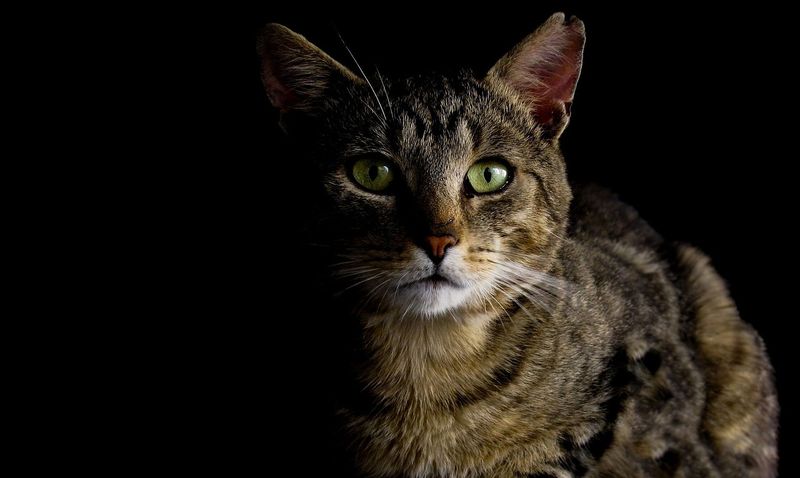
When the sun sets and darkness envelops the world, cats become the ultimate night explorers. Their eyes are specially adapted to low-light conditions, allowing them to see in near darkness. This night vision is due to a layer of cells called the tapetum lucidum, which reflects light that passes through the retina back into the eye.
This reflected light gives cats their characteristic glowing eyes in the dark, a sight that can be both enchanting and a little eerie. The tapetum lucidum increases the light available to the photoreceptors, making them highly effective at detecting movement in low light. Because of this, cats are exceptional night hunters, able to track down prey that would be invisible to others.
While humans stumble in the dark, cats glide silently, their eyes guiding them with supernatural precision. Their ability to perceive even the faintest glimmer of light makes them truly the virtuosos of the night.
2. Whisker Superpowers
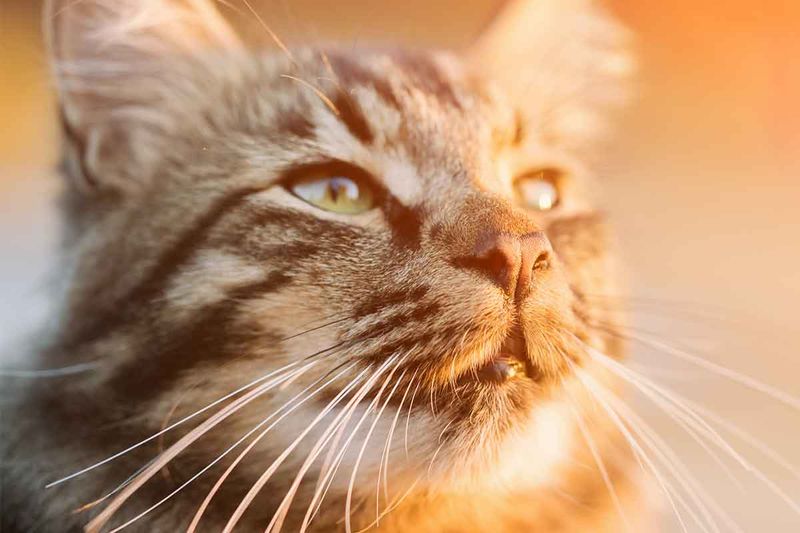
Cats possess a remarkable ability to sense their environment using their whiskers. These long, sensitive hairs act as a sophisticated radar system, detecting changes in the air and helping cats navigate tight spaces. Whiskers are not just for show; they play a crucial role in feline spatial awareness.
Each whisker is embedded three times deeper into the skin than ordinary fur, allowing them to pick up even the slightest vibrations. This sensitivity enables cats to hunt efficiently, even in pitch darkness, by feeling the movement of prey. The whisker’s role in hunting and exploration showcases their importance in a cat’s daily life.
But whiskers are not just about function—they add a touch of feline flair. Their expressive movements can indicate a cat’s mood, with forward whiskers signaling curiosity and flattened ones hinting at agitation. Truly, whiskers are a cat’s multi-functional tool and fashion statement.
3. A Symphony of Sounds
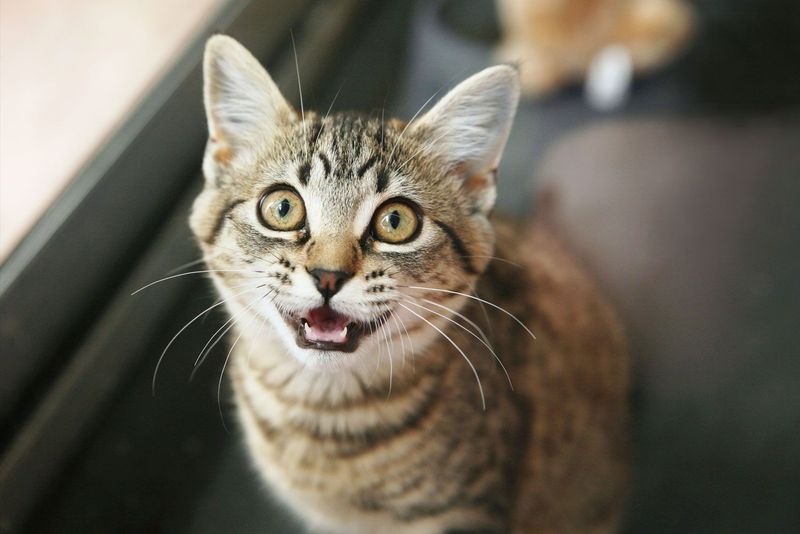
Cats are masters of auditory perception, able to hear a wider range of frequencies than humans or dogs. Their ears are finely tuned instruments, capable of detecting the ultrasonic calls of rodents and the softest whisper of wind through leaves. This acute sense of hearing makes cats exceptional hunters and aware of their environment.
Each ear is controlled by 32 muscles, allowing cats to rotate them independently and pinpoint the exact location of a sound source. This ability to localize sounds helps them hunt with precision and avoid potential threats. It’s no wonder cats often seem to know when someone is approaching, even if they’re out of sight.
In the symphony of sounds that make up a cat’s world, they are both composer and conductor. Their sensitive ears pick up the most subtle notes, creating a rich auditory landscape that enhances their interaction with the world around them.
4. The Art of Purring
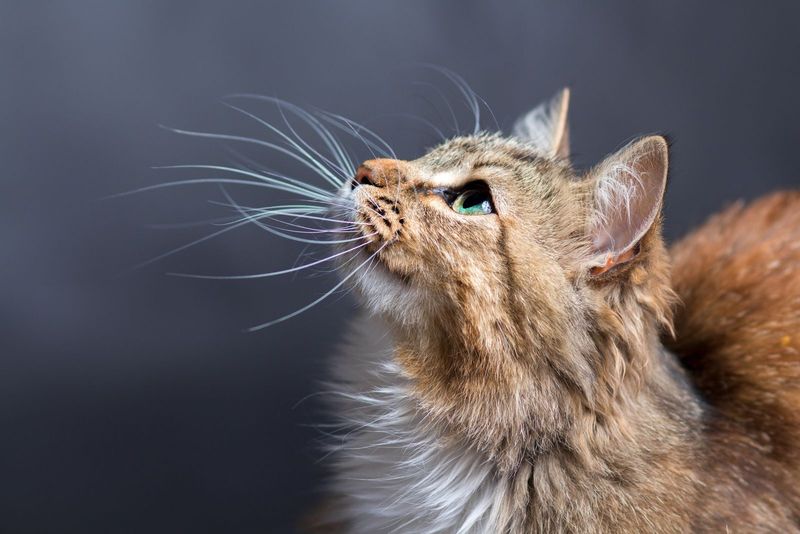
Amidst the many mysteries of cats, purring remains one of the most delightful. This gentle, rhythmic sound is not just an expression of happiness; it serves multiple purposes in a cat’s life. While often associated with contentment, cats also purr when they are anxious or in pain, possibly as a self-soothing mechanism.
The physical process behind purring involves the rapid twitching of muscles within the larynx combined with diaphragmatic movements. This creates a sound frequency that has been shown to promote healing and reduce stress. It’s a form of feline meditation, offering a glimpse into their inner world.
For cat lovers, a purring feline is akin to a living, breathing stress ball. Its soothing vibrations can ease human tension and promote a sense of calm. The art of purring is a profound example of how cats use sound and vibration to interact with their environment and companions.
5. The Language of Tails
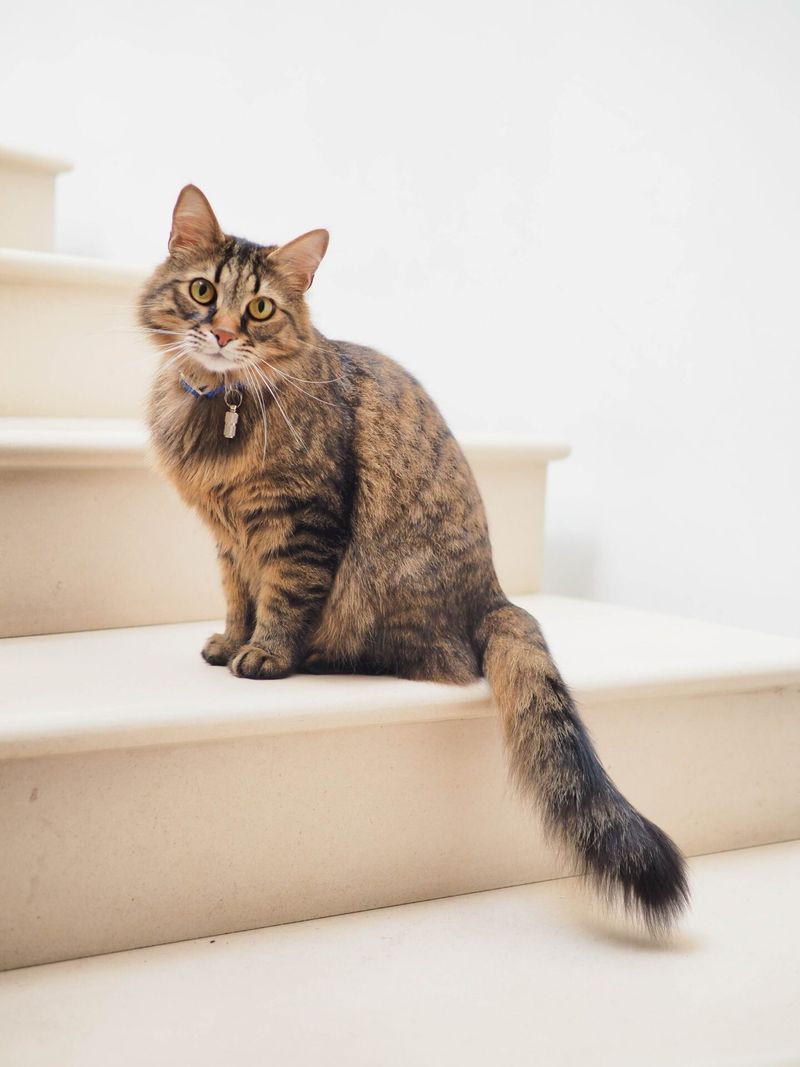
A cat’s tail is more than just a balancing tool; it’s a communication device that conveys a world of information. From a gentle flick to a full bushy bristle, tails speak volumes about a cat’s mood and intentions. Understanding these signals can enhance the bond between cats and their human companions.
A high, straight tail often signals confidence and curiosity, inviting interaction. In contrast, a low or tucked tail can indicate fear or submission. The infamous ‘Halloween cat’ pose, with an arched back and fluffed tail, is a classic display of defensive aggression.
In essence, the tail is a feline semaphore, waving messages to anyone willing to observe. By paying attention to these subtle cues, one can decipher the complex language of cats, creating a deeper connection and appreciation for their nuanced forms of expression.
6. Olfactory Adventures
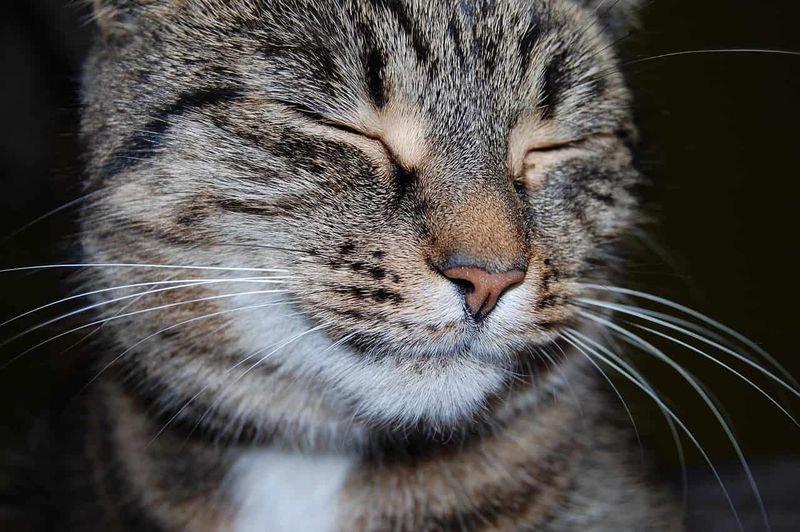
Cats experience the world largely through their powerful sense of smell, which is far superior to that of humans. Their noses are equipped with a specialized organ called the vomeronasal organ, or Jacobson’s organ, located on the roof of the mouth. This allows them to detect pheromones and other chemical signals beyond ordinary scents.
When a cat curls back its lips and opens its mouth slightly after sniffing something intriguing, it’s performing the Flehmen response, drawing scents over this organ for analysis. This behavior offers insights into the complex and invisible world of scent that cats navigate daily.
From marking territory to identifying friends and foes, scent plays a crucial role in a cat’s social interactions and environmental understanding. These olfactory adventures form a rich tapestry of information, guiding their behavior and interactions with subtle precision.
7. The Subtle Power of Paws
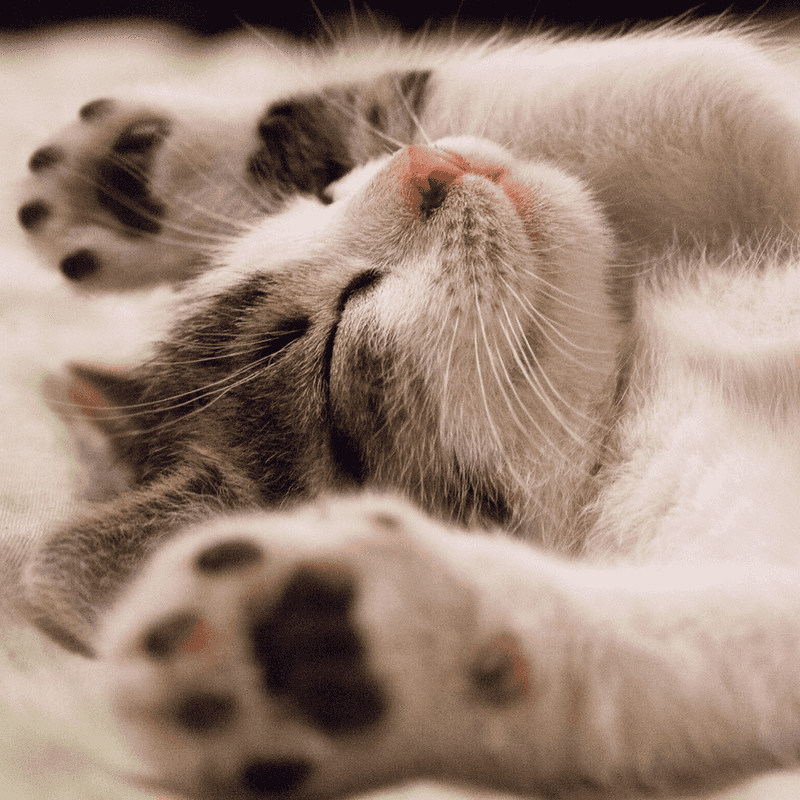
Cat paws are marvels of natural engineering, combining sensitivity with strength. Each paw is equipped with retractable claws and densely packed nerve endings, making them perfect tools for exploration, hunting, and even communication. Cats use their paws to interact with their environment and express themselves.
The pads on a cat’s paws are highly sensitive, allowing them to sense textures, vibrations, and temperature changes. This sensitivity makes them adept hunters and climbers, as they can detect the faintest movements of prey or assess the stability of a surface.
Beyond practicality, paws are instruments of play and affection. A gentle paw touch or knead can be a sign of comfort and trust, while a playful swat reveals their mischievous side. The subtle power of paws is a testament to the intricate ways cats connect with the world around them.
8. The Enigma of Catnip
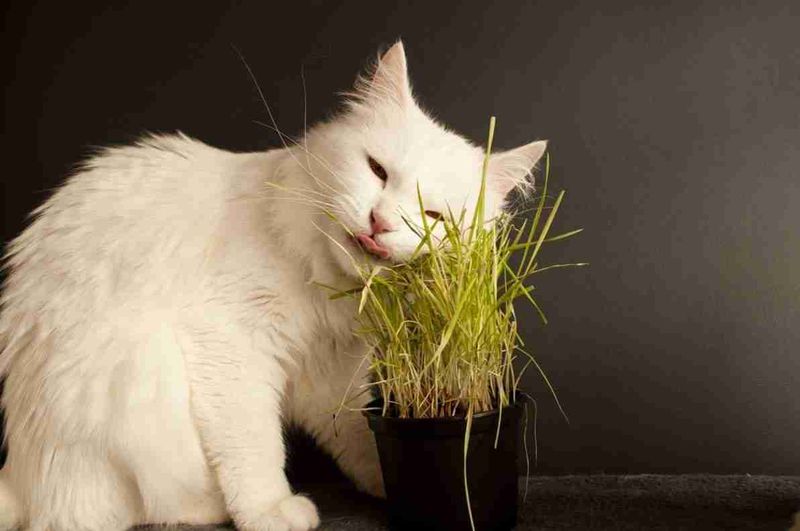
Catnip’s mysterious allure can transform even the most stoic feline into a playful kitten. The active compound in catnip, nepetalactone, binds to receptors in a cat’s nose, triggering a series of behavioral changes that can include rolling, purring, and even playful aggression.
Not all cats are affected by catnip, and sensitivity can vary widely, with genetics playing a significant role. However, for those that do respond, catnip can create a brief but intense period of euphoria, akin to a natural high. This reaction usually lasts about 10 minutes, after which cats often lose interest and return to their usual selves.
The enigma of catnip offers a glimpse into the complex and varied nature of feline behavior. It serves as a reminder of the whimsy and unpredictability that cats bring into our lives, making them endlessly fascinating companions.
9. The Curious Case of Mirrors
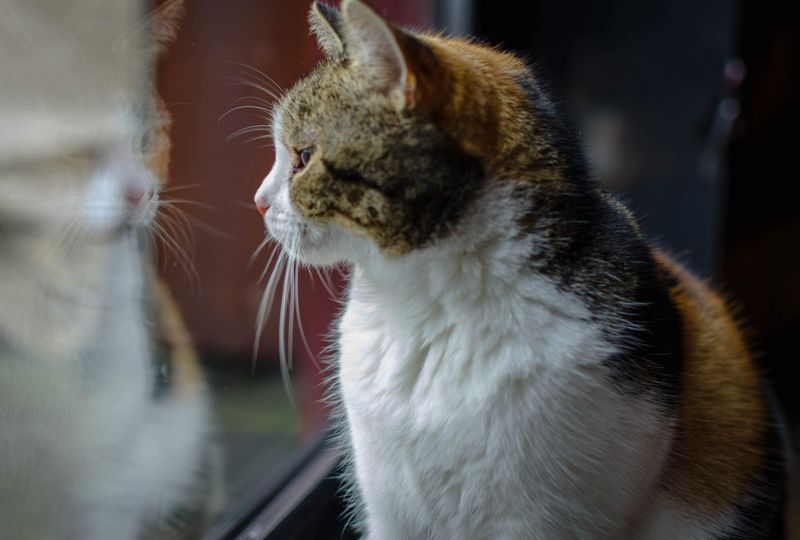
Mirrors present an intriguing puzzle for cats, often leading to comical or curious behavior. While some cats may ignore their reflection, others might engage in playful antics or even display aggression. This behavior stems from a cat’s limited understanding of self-recognition, as they generally do not associate the reflection with themselves.
The curious case of mirrors highlights the complexity of feline perception and their cognitive abilities. Though they may not grasp the concept of their reflection, mirrors can be a source of entertainment and exploration, offering a new perspective on their environment.
For cat owners, observing their pet’s reaction to a mirror can provide insights into their personality and level of curiosity. Whether it’s a bold exploration or a cautious glance, a cat’s interaction with mirrors is a delightful reminder of their inquisitive nature and the joy they bring to our lives.
10. The Intrigue of Boxes

Few things captivate a cat’s attention quite like an empty box. This seemingly simple object can provide endless amusement and comfort, offering a safe haven for exploration and relaxation. The love for boxes is deeply rooted in feline behavior and psychology.
Boxes provide a sense of security and concealment, allowing cats to observe their surroundings without being seen. This instinctual preference for enclosed spaces mimics their natural habitat, where they seek out hidden spots to rest and watch for prey.
Beyond security, boxes also offer a stimulating environment for play. Their textures and confines encourage cats to engage their hunting instincts, batting at invisible foes or pouncing with delight. The intrigue of boxes is a testament to the simplicity and creativity of feline play and comfort, making them an essential part of a cat’s world.
11. The Mystery of Chirping
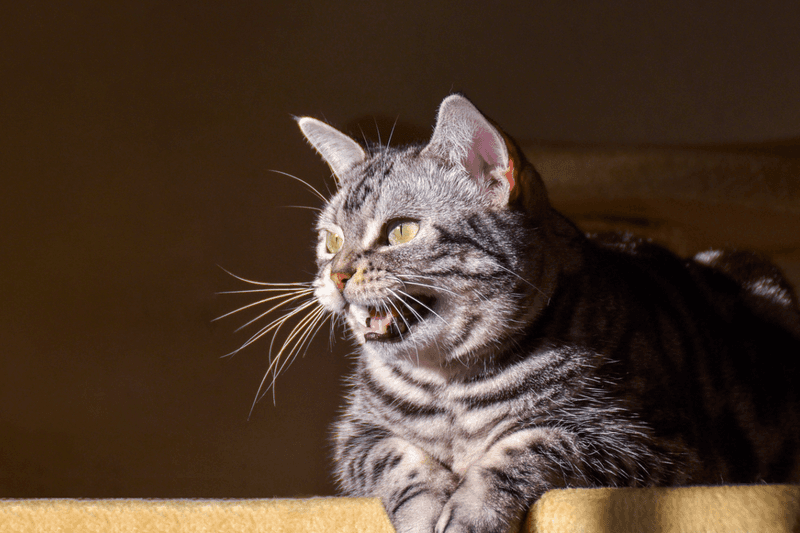
One of the most charming and mysterious behaviors in cats is their tendency to ‘chirp’ at birds or other fast-moving objects. This sound, a mix between a meow and a purr, is often accompanied by chattering teeth and an intense, focused gaze.
The mystery of chirping is thought to be linked to a cat’s hunting instincts. When observing prey that is out of reach, this sound may be an expression of excitement, frustration, or anticipation. Some experts believe it mimics the calls of birds, but its true purpose remains a subject of speculation.
For cat lovers, chirping is an endearing quirk, adding to the rich tapestry of feline communication. It showcases their adaptability and the intricate ways they perceive and interact with the world. Whether a call to action or an expression of longing, chirping is a delightful reminder of a cat’s playful spirit.
12. The Skill of Balance
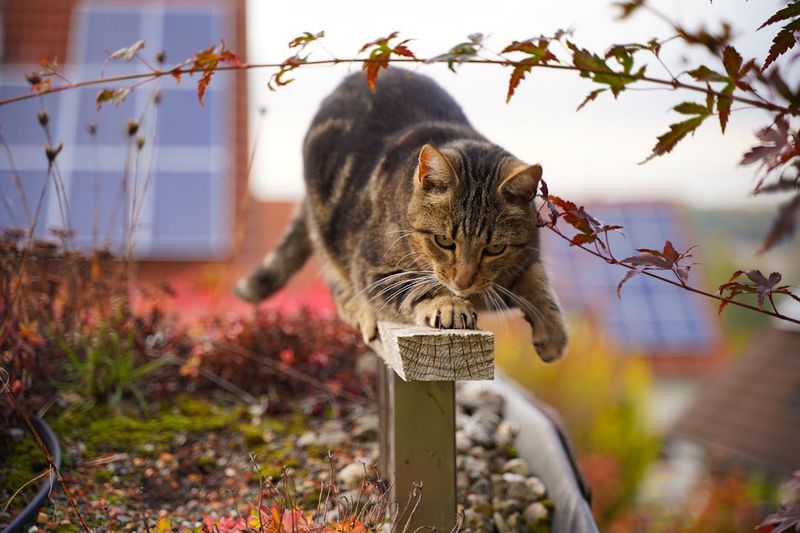
Cats are renowned for their unparalleled balance and agility, often defying gravity with their graceful movements. This skill is largely due to their flexible spine, powerful muscles, and a tail that acts as a counterbalance. Whether leaping to great heights or navigating narrow ledges, cats exhibit a mastery of movement that seems almost supernatural.
The skill of balance is not just about physical prowess; it reflects a cat’s acute spatial awareness and adaptability. Their ability to adjust their body mid-air and land on their feet is a testament to their evolutionary design, honed over millennia as adept hunters and explorers.
For those lucky enough to witness a cat’s acrobatics, it’s a reminder of the elegance and precision inherent in these creatures. The skill of balance is a dance of nature, performed with effortless grace and a touch of feline flair.
13. The Whisper of Whiskers
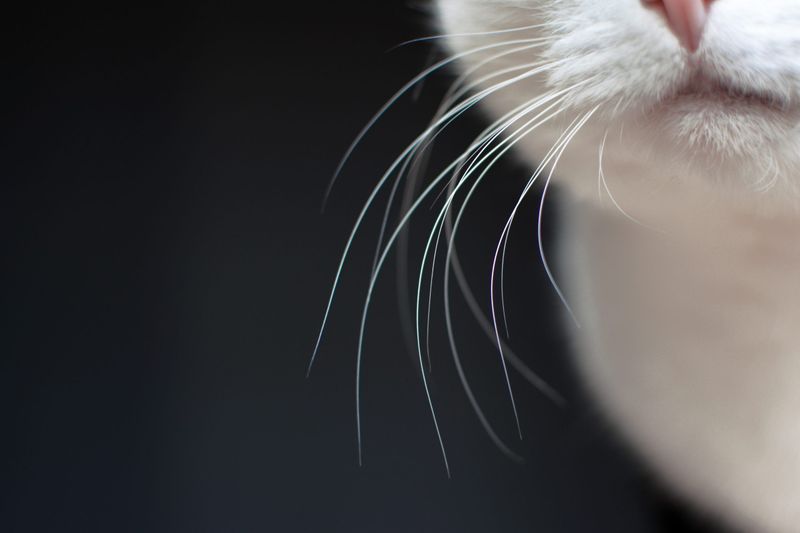
In the quiet hours of night, a cat’s whiskers become their guiding lights. These sensitive hairs extend beyond their body, acting as a sensory perimeter that helps them navigate their surroundings. Known as vibrissae, whiskers detect changes in air currents, guiding cats through the dark with surprising accuracy.
The whisper of whiskers is a marvel of natural engineering, allowing cats to sense obstacles without making contact. This ability is especially useful in dimly lit environments, where sight is limited. By feeling their way, cats can move silently and confidently, even in unfamiliar territory.
Whiskers are more than mere accessories; they are vital tools for survival and exploration. They offer a silent communication with the world, a whisper of information that guides cats with subtlety and precision. The whisper of whiskers is a testament to the intricate and sophisticated ways cats perceive their environment.
14. The Allure of Sunbeams
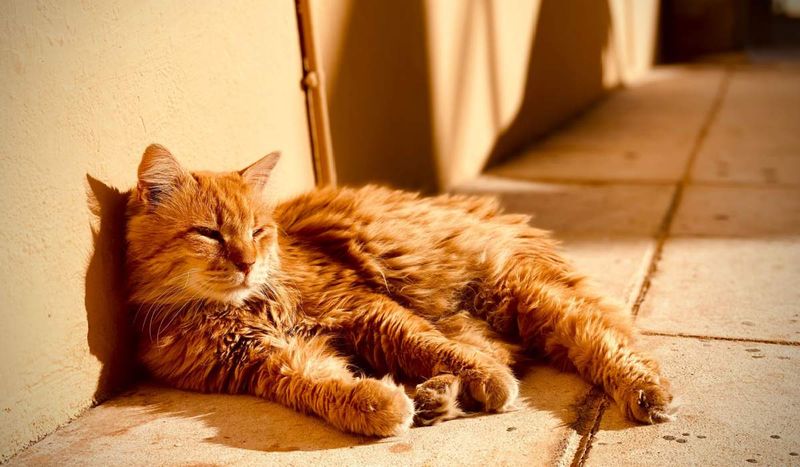
Sunbeams hold a magical allure for cats, drawing them like moths to a flame. The warmth and light provide comfort and security, creating perfect spots for relaxation and contemplation. This behavior taps into a cat’s instinctual need for warmth and its desire for leisure.
The allure of sunbeams is not merely about physical comfort; it’s a sensory delight. The gentle warmth of the sun relaxes muscles, while the light dances on their fur, creating a peaceful, almost meditative state. It’s a reminder of the simple pleasures that cats savor, finding joy in the ordinary.
For cat owners, watching their pet bask in a sunbeam is a heartwarming sight, a moment of shared tranquility. It’s a testament to the contentment of being in the moment, something cats have mastered with enviable ease. The allure of sunbeams is a celebration of life’s simple joys and the art of relaxation.
